Autumnal Equinox/Mabon
Here are Jan's thoughts:
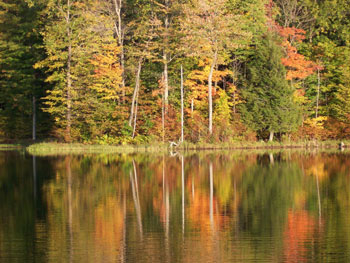
Like the Vernal Equinox, this celebration occurs at a point of pivot. With days and nights of equal lengths, there is a particular stillness which encourages contemplation of the summer now dying, and the long night ahead. Whilst we give deep thanks for the harvest resting in our store-houses, we are starkly aware of what lies before us.
Mabon roughly translates to “Bright Blessings”, erected almost like a shield against the encroaching darkness. Another of the titles belonging to this festival is that of “Harvest of the Wine” – this because grapes are traditionally gathered and trodden at this time of year.
No wonder you invest a lot of effort into the heartfelt thanksgivings you offer to your gods, beseeching Their blessing and nourishment through the cold months ahead. No wonder you lay out a representation of your harvest as an acknowledgement of Their bounty. No wonder you watch the skies anxiously, assiduously check over your food stores, determinedly push yourself on to find that last berry on the coldest day.
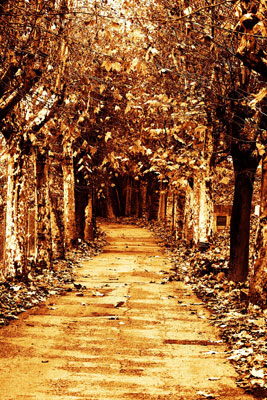
Our Autumnal follows this theme of celebration and thanksgiving. But we also see it as a time of challenge, where we turn to meet the darkness, and assess what we have achieved in the year behind us – gathering our personal harvest, if you will. We see this day as a “call to arms” of sorts. Evil moves easily in darkness, but therein reside the miracles of the darker Goddesses too. Not all the denizens of the dark are to be feared – though all are to be respected.
The seerwork from this ceremony is regarded as an “instruction manual” to get us through to Lights, and often contains some profound warnings and observations. We weigh our own contribution since last we came to the Autumnal, attempting to gauge what we have contributed. This is important for us, for it prepares us for another festival later in the year where we assess the overall function of the entire group throughout the year and, hopefully, discover that we have given more than we took.
There is a point in the ceremony where each of us is given time to silently call upon the High Powers for a personal symbol which encapsulates the contribution we can each make over the next few months. None of us speak of this symbol until we reach the Vernal in the following year. At that point we do our best to make sense of how each of us was able to enact what we saw or felt.
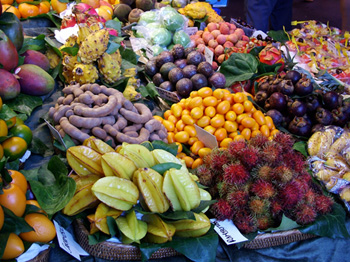
Our altar shares many similarities to a Christian Harvest Festival display. It literally groans with food, grains, nuts, fruit and berries. There is always a fresh baked loaf, along with sprays of golden Autumn leaves, and we tend to tuck in enthusiastically literally as soon as the circle is closed. Reports from this ceremony tend to be somewhat muffled, due to the many full mouths. The altar is also scattered with ornaments which reflect the light of the many candles carefully placed amid the bounty.
For me, the Autumnal is a contradictory ceremony in many ways. It is, on the one hand, a joyous and noisy triumphal celebration of bounty and growth; but it is also a sad goodbye to warmth and light. I am sharply aware that there may well be trials ahead…..but my skin is still warmed by a sun at its zenith.
We move now into a period of reflectiveness and mystery. The ceremonies ahead until, again, we reach the brightness of Lights, have a certain echoing and distant quality. They are “serious”…though the Winter Solstice does have a particular glitter that comes as a welcome nod to light in the darkest days.
Also bittersweet here is the fact that both the God and the Goddess are close by our sides. We walk with them, one on either side, into the most demanding time of the year. And with Their blessing we shall emerge, joyous, with the snowdrops.
Here are Graham's thoughts:
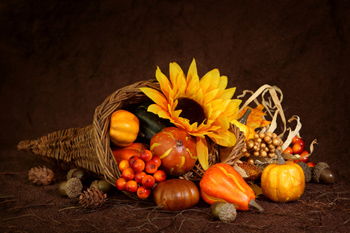
The Autumnal Equinox marks the mid-point of the sun as it moves across the horizon from Summer Solstice to Winter Solstice. This means that the festival usually falls around the 20th to the 22nd of September. Astrologically, this happens when the Sun enters Libra.
This day is also known as Harvest Home and would have roughly marked the end of the grain or cereal harvest. The actual date would have varied from year to year with the climate and the crop. Today's traditional Christian harvest festivals provide a good template for the celebration - collect in all the harvest and food, arrange it nicely and bless it. The harvest aspects are overlaid with a real sense of gathering in, and making ready for the Autumnal storms. It’s a good time to go around the house or farm-stead, make repairs, and carry out maintenance.
Much as Lammas had ritual and tradition around the cutting of the first sheaf, so the Autumnal Equinox has similar symbols with regard to the cutting of the final sheaf. At this time of year, corn-dollies would be made. This is vitally important, because they represent the spirit of the corn. Essentially, the dollies are keeping this spirit alive until ploughing and sowing when the whole process will start again. They are the spiritual equivalent of saving the seed to plant next year. As a way to motivate everyone to bring the harvest in before the Winter set in, a great deal of importance would have been placed on being the first farm in an area to bring in the harvest, so this kind of symbolism has become attached to the Autumnal Equinox.
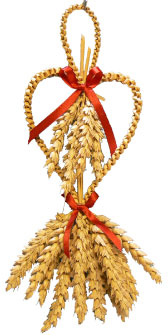
Whereas some festivals appear to be mainly God or Goddess based, the Autumnal is more balanced. The Queen of the Corn is symbolised in a corn dolly, but the spirit can also be seen as a male figure at the same time, in British folklore called John Barleycorn. The traditional folk-songs describe how John Barleycorn must be cut down, and often list the ways he is mistreated – beaten, ground, cooked and eaten. This actually illustrates the process of cutting the corn, then winnowing, grinding, and baking it into bread. Whereas some festivals appear to be mainly God or Goddess based, the Autumnal is more balanced, featuring both in equal measure.
Like the Vernal, the Autumnal a contradictory day. It is both a still point, where day and night hang in balance, and a dynamic day of forward motion. At this time of year the sunset or sunrise is moving at its fastest across the horizon while day and night are of equal length. This is also the middle of the waning year – after this point, the nights become longer than the days. So there is a real sense that the dark half of the year is accelerating.
As well as the end of the corn harvest, this time of year is heavily associated with the harvest of fruits and berries. The very practical activities of making pickles, jams, chutneys and other preserves have a direct parallel in terms of the energies of this day. This is a time for gathering in the energy, making it real, manifesting results. And, when that has been done, it is a day for storing up that bounty and preserving it so that it can last into the months ahead.
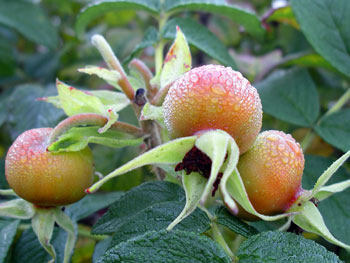
The colours and symbols we use at Autumnal are in some ways similar to Lammas. Corn is important, so corn yellow is one colour. But to differentiate it from the earlier festival we also use dark russet browns, reds and greens – the really classic Autumnal colours. And, together with corn arrangements, more berries and leaves come into our flowers at this time of year. Another important symbol is the cornucopia. There are many ways this can be represented, from an actual horn of plenty , to a picture or even an edible one. I've seen a recipe using bread dough in strips to make a cornucopia that you fill with fruit as an edible table centre-piece.
One of our favourite dishes to cook on this day is named Free Crumble. We are lucky enough to get apples from friends with trees. (Most people with apple trees have more fruit than they know what to do with at this time of year.) We cook this into a crumble with blackberries and elderberries, both of which are widely available by foraging in the UK.(Elderberries can give you a tummy upset if you eat a lot without cooking them, but in a crumble they’re fine). Another idea, to provide an echo back to the Vernal, is to cook lamb on this day. Spring born animals will be properly grown and matured and won't have to be flown in from New Zealand.
So, this is a festival of balance combined with movement. It marks the time when nights are longer than the days, and ushers in autumn. A time to gather in your resources and give thanks for the bounty of the Goddess.
